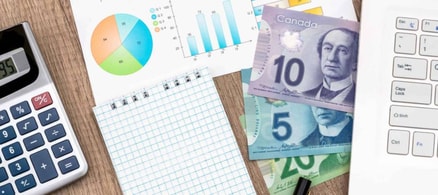How much should you be saving?

It can be difficult to determine how much of your income to divert to your nest egg each year, particularly when you’re dealing with more immediate financial concerns.
Financial services company Fidelity suggests you’ve saved at least one year’s worth of income by the age of 30 and 10 times your annual salary by the time you’re 67. We’ve broken down the numbers for you below:
- 30 years: 1 x income
- 35 years: 2 x income
- 40 years: 3 x income
- 45 years: 4 x income
- 50 years: 6 x income
- 55 years: 7 x income
- 60 years: 8 x income
- 67 years: 10 x income
More: What is the Rule of 30?
Maximize Your Tax Refund with TurboTax Canada!
Simplify tax season with this user-friendly software. Get step-by-step guidance, maximize deductions, and file with confidence. Trusted by millions, TurboTax Canada ensures accuracy and peace of mind. Start your taxes today and get the refund you deserve
Get the tax refund you deserveRetirement savings in your 20s

If you’re fresh out of college or university, retirement’s probably not the first thing on your mind. Get your student loans out of the way first and make sure to pay your credit card bills in full and on time each month to boost your credit score.
Then set up an emergency fund in a high-interest savings account. This will provide you with some support in case of unexpected expenses, like a job loss or big medical bill.
Retirement savings in your 30s

When you get into your 30s, you’re likely worried about paying your mortgage, getting hitched and supporting your family.
Basically, your finances don’t just revolve around only you anymore, so take out a life insurance policy to support your loved ones.
But while you’re doing so, make sure to still invest in an RRSP or TFSA and grow your income with other investments. By 35, you should have at least twice your annual salary saved up for retirement.
Grow Your Savings Effortlessly with Moka
Automate your savings with every purchase and watch your money multiply. Moka rounds up your transactions and invests the spare change. Start building wealth effortlessly today. Join thousands of Canadians embracing financial freedom with Moka
Sign up nowRetirement savings in your 40s

You should have a nice, tidy stash of retirement savings by now — if you’ve fallen behind in your goals, however, talk to a financial adviser to nail down a plan.
This is especially important if you’ve pushed your retirement savings aside to focus on other things in past years. At age 45, you should have four times your annual salary saved up for your future already.
Continue bolstering your savings with investments and any salary bonuses or raises you earn and look for ways to cut down on your regular monthly payments, like reviewing your insurance or mortgage rates.
Retirement savings in your 50s

Some Canadians choose to retire in their 50s and if you’ve managed to save up at least seven times your annual income by then, you might consider doing so as well.
If you’re not quite ready yet, however, just keep on doing what you were before. Maximize your contributions to your RRSP and TFSA, find ways to slash those monthly bills and continue monitoring the stock market and investing.
Make sure to deal with any remaining debts before you retire as well. If you’re juggling multiple lines of credit, you can even take out a personal loan to cut down on interest and pay off your debts faster.
Retirement savings in your 60s

Once you’re in your 60s, you’re eligible to start receiving benefits from the Canada Pension Plan (CPP), and Old Age Security (OAS) at 65. These won’t be enough to get you through retirement on their own — but that’s why you’ve bulked up on savings and RRSP income in past years.
You might start withdrawing money from your RRSP account, which means it’s now taxable and you’ll have to start reporting it on your returns.
Instead of hiring a tax professional with pricey fees to do all the work for you, use an online service and sign up for a plan that makes the most sense for you and your income.
Sponsored
Trade Smarter, Today
With CIBC Investor's Edge, kick-start your portfolio with 100 free trades and up to $4,500 cash back.







